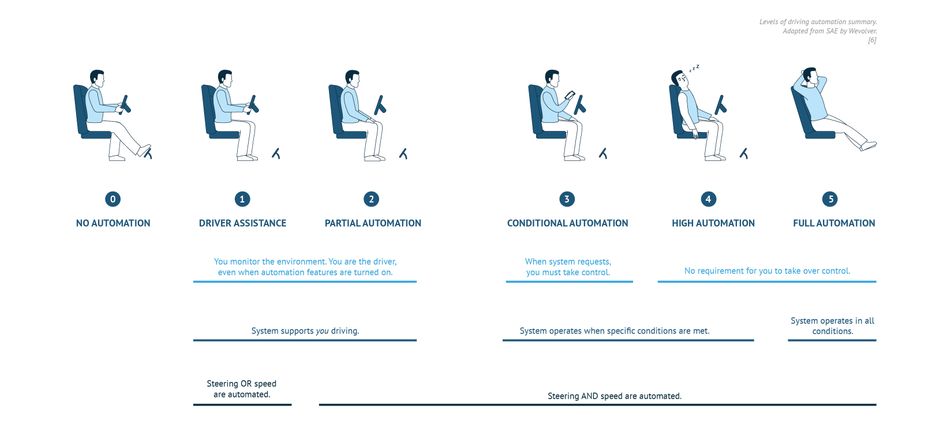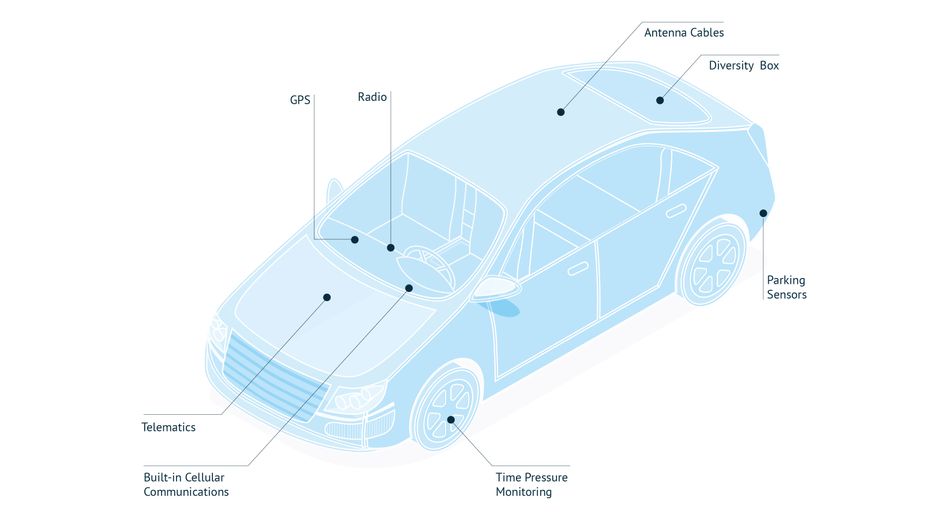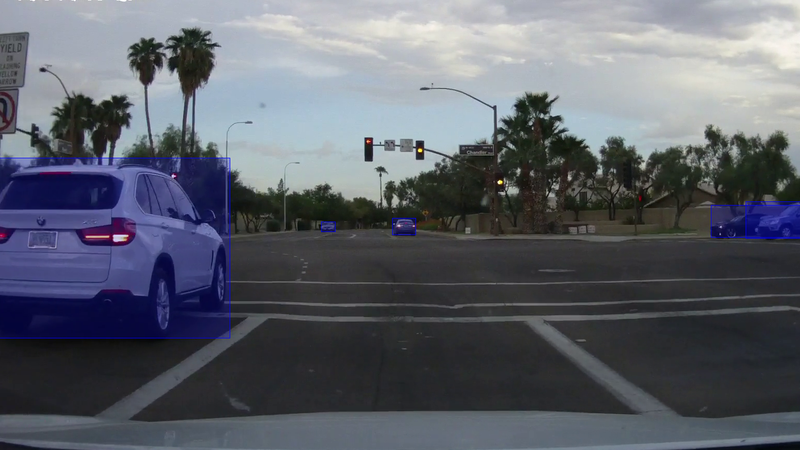Small and Speedy Connectivity Solutions Enable ADAS and Increase Vehicle Safety
Article #5 of our Connected Transport Series. High-speed networking and miniaturization of interconnectivity solutions enable advanced driver-assistance systems (ADAS) and increase vehicle safety.
This is the final article in a 5-part series exploring the connectivity solutions for the future of transportation. The series will detail various connectivity challenges engineers face and describe the technology that will provide the solutions to enhance the transportation and driving experience.
The articles were originally published in an e-magazine, and have been substantially edited by Wevolver to update them and make them available on the Wevolver platform. This series is sponsored by Mouser Electronics, an online distributor of electronic components. Through their sponsorship, Mouser Electronics supports engineers in building a highly connected transport future in addition to knowledge sharing on related topics of electric vehicles, 5G, and autonomous transport.
The technological morphing of our most common transportation mode - the car - is a sight to behold. In just a few short years, technology that might once have been the preserve of race cars or even something from the aviation industry is becoming more and more common in your regular sedan or SUV. The race to deliver autonomous vehicles continues, but the advanced driver-assistance systems (ADAS) required to facilitate this are already appearing on the automotive scene.
High-speed networking, coupled with the miniaturization of interconnectivity solutions, enables advanced driver-assistance systems (ADAS) to improve driver and vehicle situational awareness, helping to reduce accidents and injury. ADAS is helping to make the car of today and tomorrow safer. This article will explore high-speed networking and miniaturization of interconnectivity solutions.
Advanced Driver Assistance Systems (ADAS)
ADAS requires high-level vehicle connectivity to function. McKinsey & Company has noted five significant classifications of Vehicle Connectivity, with the firm asserting that by 2030, 45 percent of global new-car sales could be at Level 3 or above in connectivity:
 Figure 1: Five levels of vehicle connectivity ADAS Needs Both Wired and Wireless Connections
Figure 1: Five levels of vehicle connectivity ADAS Needs Both Wired and Wireless Connections
A connected or autonomous vehicle must react to outside influences while simultaneously communicating with its environment; it shares many attributes with the human nervous system. New vehicles with ADAS have cameras, radar, and LiDAR units installed to sense and perceive what is happening to them and their surroundings. High-speed communications with near-zero latency - the delay before transferring data begins following an instruction for its transfer - is becoming mandatory to respond in real-time to varying conditions. The result ensures that everything is reliable, secure, and instantaneous and demands high signal integrity (SI) technology.
Next-generation 5G mobile broadband delivers exponentially faster speeds surpassing 4G LTE with significantly lower latency. Widespread deployment of 5G is beginning to spur advances in intelligent vehicles and vehicle-to-everything (V2X) deployment. Mobile carriers are racing to meet the demand for 5G networks supporting V2X data transmission for delivering real-time information and faster data transmission. The expanding 5G mobile communications rollout will incorporate frequencies ranging 10 times higher than 4G LTE. The frequency band will be extended from below 6GHz currently up to 100GHz. Faster data rates at higher frequencies will help overcome V2X technological challenges.
Miniaturization
So many new electronic components and systems are necessary to fit inside the vehicle. ADAS applications require miniaturized connector solutions for black-box applications. There is an ever-increasing demand for flexible and reliable connections that can be robotically assembled by providing board-to-board solutions made of robust materials and are easy to mate because of a vast floating range.
In support of the increased demand for car camera modules with high-speed video processing. Reliable and robust connections for ADAS applications providing positive locking features and a dual-contact design for micro products, wide variety of actuator options, including zero insertion force (ZIF), slider, and flip, help establish a secure connection between the Flexible Flat Cable (FFC)/Flexible Printed Circuit (FPC) connectors and terminals. Vehicle radar applications commonly employ FFC/FPC connectors. FPCs are a lighter alternative to conventional wire-to-board connectors. Their high level of flexibility allows them to conform to the compact shapes demanded by today's vehicles. Highly integrated electronic solutions yield complex systems where electronic control units (ECUs), sensors, and wiring are interconnected.
High-Speed Networking from Molex
Connected and autonomous mobility for ADAS demands secure, ultra-reliable time-sensitive integration right across the network, and at high speed. Achieving the connected vehicle's full potential requires emerging technologies and solutions that enhance road safety and create a seamless connectivity experience in the vehicle. ADAS requires progressively increasing data rates that go well beyond 1Gbps. Improving vehicle safety is a top priority because the occupants are of the utmost value. Safety-critical applications are warranting a shift away from unshielded twisted pair (UTP), commonly employed at Level 2, to shielded twisted pair (STP) and shielded parallel pair (SPP), that is commonly employed at Level 3 or higher.
Keeping pace, Molex has introduced a wide variety of multiple shielded solutions into its product portfolio to meet rigorous signal integrity requirements for safety-critical applications. A prime example is the HSAutoLink Interconnect System. The HSAutoLink Interconnect System leverages Molex's expertise at producing high-speed cable technology and adapting to the needs of the emerging segment of the Connected Vehicle.
The Molex HSAutoLink II Interconnect System (HSAL2) is a flexible, expandable product family with data rates up to 6Gbps, allowing for combined links and supporting multiple protocols in the same connector (USB 2.0, USB 3.0, LVDS, Ethernet AVB, HDMI, MicroCross DVI, DisplayPort, etc.). It is compatible with shielded twisted-pair (STP) or jacketed unshielded twisted pair (JUTP) cable construction, offering a cost-competitive solution for high-speed differential signaling applications providing construction flexibility. It has fully protected perimeter seals and wire seals, ensuring the system is rated to IP69K for harsh environments and wet locations. HSAutoLink II meets the bandwidth requirements for advanced in-vehicle applications, including infotainment, telematics, and cameras. Molex HSAutoLink II Interconnect System offers both sealed and unsealed options.
While not as fast as its sibling, the Molex HSAutoLink I Interconnect System (HSAL1) is available in 4 and 5 circuits and can deliver data rates up to 2Gbps. The dependable HSAutoLink Interconnect System brings a proven United States Council for Automotive Research-30 (USCAR-30) compliant solution for point-to-point in-vehicle connections, complete with multiple keying options and full-length cable shielding for superior signal performance and reduced Electro-Magnetic Interference (EMI).
Similarly, there is an increase in coaxial solutions required for internal vehicle connectivity architectures. ADAS-related applications include camera, sensor, antenna, and the telematics control unit (TCU). Each of these applications has signal integrity requirements for safety and 5G. The Molex FAKRA II Automotive Connector System meets both American USCAR and German Fachkreis Automobil (FAKRA) automotive standards. Standard uses for FAKRA connectors are coaxial connections on devices with external antennas; such applications include Satellite Digital Audio Radio Service (SDARS), cellular, GPS navigation, keyless entry, and satellite radio. The FAKRA connector provides a mechanical key feature along with a visual color code to differentiate between applications. Molex offers FAKRA connectors with a high-temperature plastic shroud that is fully compatible with lead-free reflow processes (Figure 2).
 Figure 2: Molex FAKRA II Automotive Connector System helps in various ADAS and related applications inside the vehicle. That includes audio, navigation, infotainment, Bluetooth, GPS, communication, and sensing. Summary
Figure 2: Molex FAKRA II Automotive Connector System helps in various ADAS and related applications inside the vehicle. That includes audio, navigation, infotainment, Bluetooth, GPS, communication, and sensing. Summary
High-speed networking and miniaturization of interconnectivity solutions enable advanced driver-assistance systems (ADAS) and increase vehicle safety. It may not be a race track, but one day you'll be driving down the road with data coming and going from your vehicle at billions of bits per second. As high-speed networking safely takes control - and the wheel - and you relax into your seat, peace of mind comes courtesy of the small, speedy interconnect solutions.
This article was originally published by Mouser and Molex in an e-magazine and substantially edited by the Wevolver team. It's the final article of a 5-part series exploring connectivity solutions for the future of transportation.
The first article examined how the 5G network will deliver Connected Cars.
The second article discussed connected transport and automotive ethernet.
The third article introduces the modularity challenges of Connected Cars.
The fourth article stressed the importance of regulations and infrastructure changes in order for connected cars to realize their potential.
The fifth article looked at connectivity requirements for ADAS.
About the sponsor
Mouser Electronics is a worldwide leading authorized distributor of semiconductors and electronic components for over 1,100 manufacturer brands. They specialize in the rapid introduction of new products and technologies for design engineers and buyers. Their extensive product offering includes semiconductors, interconnects, passives, and electromechanical components.
Sources and further reading:
1. Mckinsey. Setting the framework for car connectivity and user experience. November 2, 2018. Available from: https://www.mckinsey.com/industries/automotive-and-assembly/our-insights/setting-the-framework-for-car-connectivity-and-user-experience
About Mouser Electronics
Mouser Electronics is a worldwide leading authorized distributor of semiconductors and electronic components for over 1200 industry-leading manufacturers. We specialize in the rapid introduction of...
202 Posts


